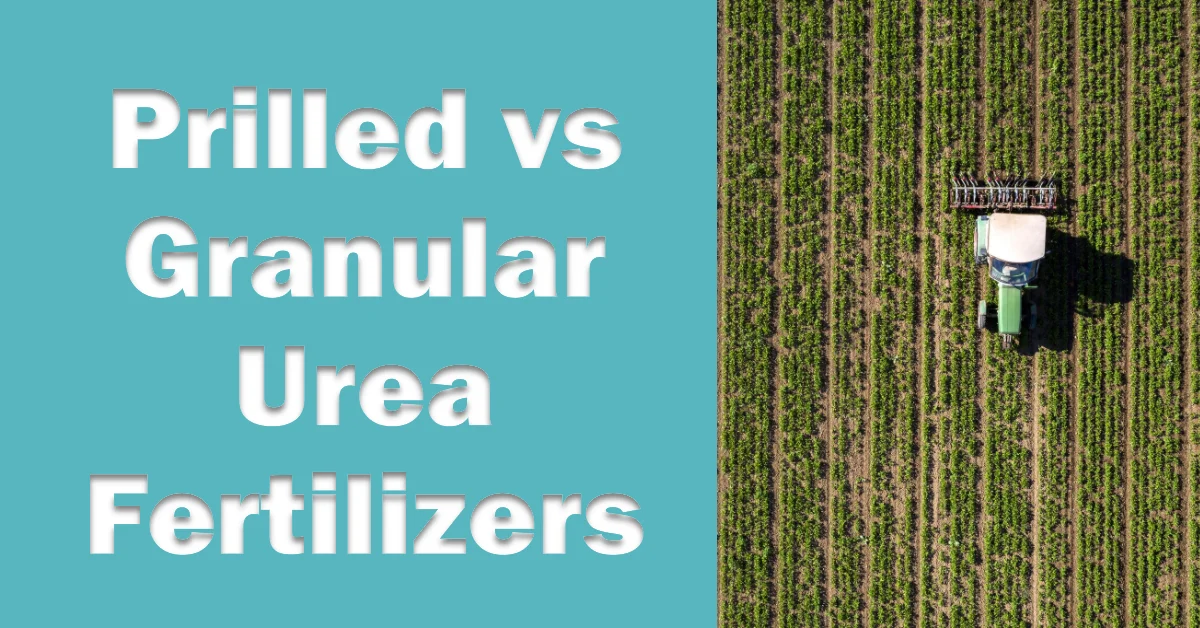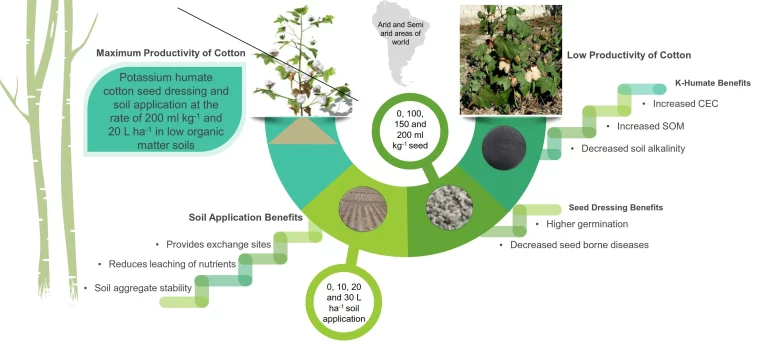The Difference Between Prilled and Granular Urea: A Comprehensive Guide
What is Difference Between Prilled and Granular Urea? Fertilizer production is a process of transforming raw materials into solid particles which use for plant growth. There are different methods of fertilizer production, but two of the most common ones are prilling and granulation.
These methods involve converting liquid material into solid particles by using different techniques and devices.
In this post, we will compare and contrast prilling and granulation. How they work, what are their advantages and disadvantages?
So, let’s get started!
Prilled Urea vs Granular Urea: A Comparative Analysis
Here is a table that summarizes the key differences between prilled and granular urea:
| Property | Prilled Urea | Granular Urea |
|---|---|---|
| Production method | Spraying molten urea from the top of a tower and letting it solidify into spherical particles | Agglomerating fine powder or small particles into larger ones by using a rotating device |
| Particle size | Smaller (1-4 mm) | Larger (2-6 mm) |
| Particle shape | Spherical | Irregular |
| Mechanical strength | Lower | Higher |
| Abrasion resistance | Lower | Higher |
| Density | Lower | Higher |
| Porosity | Higher | Lower |
| Coating ability | Poorer | Better |
| Dissolution time in water | Shorter | Longer |
| Caking tendency | Higher | Lower |
| Spreading performance | Better | Worse |
What is Urea fertilizer?
Urea, also known as carbamide, is an organic compound with the chemical formula (NH2)2CO. It’s a colorless, odorless solid, highly soluble in water, and practically non-toxic. Urea plays a vital role in plant nutrition and soil fertility. It’s one of the most common nitrogen fertilizers, providing an accessible form of nitrogen for plants, promoting growth and crop yield.
What is Prilling?

Prilled urea, often referred to as “urea prills,” is a type of urea that has been formed into small, spherical solid particles. Prilling is a process of spraying liquid material from the top of a tower and letting it fall down while cooling and solidifying into small spherical particles. As the urea melt falls through the tower, it cools and solidifies into small, spherical prills.
Prilling is a simple and low-cost method that can produce uniform and dust-free particles. However, prilling also has some drawbacks, such as:
- Low mechanical strength: The prills are brittle and prone to breakage during handling, storage, and transportation.
- High porosity: The prills have a lot of air spaces inside them, which reduce their density and increase their water absorption.
- Low density: The prills have a low bulk density, which means they occupy more volume and weight less than granules.
- Poor coating ability: The prills have a smooth surface that makes it difficult to apply coatings or additives to them.
Prilled urea is known for its uniform size distribution and ease of handling. However, it’s more susceptible to crushing due to its lower strength compare to granular urea. Prilled urea is often use in situations where rapid dissolution and ease of spreading are required.
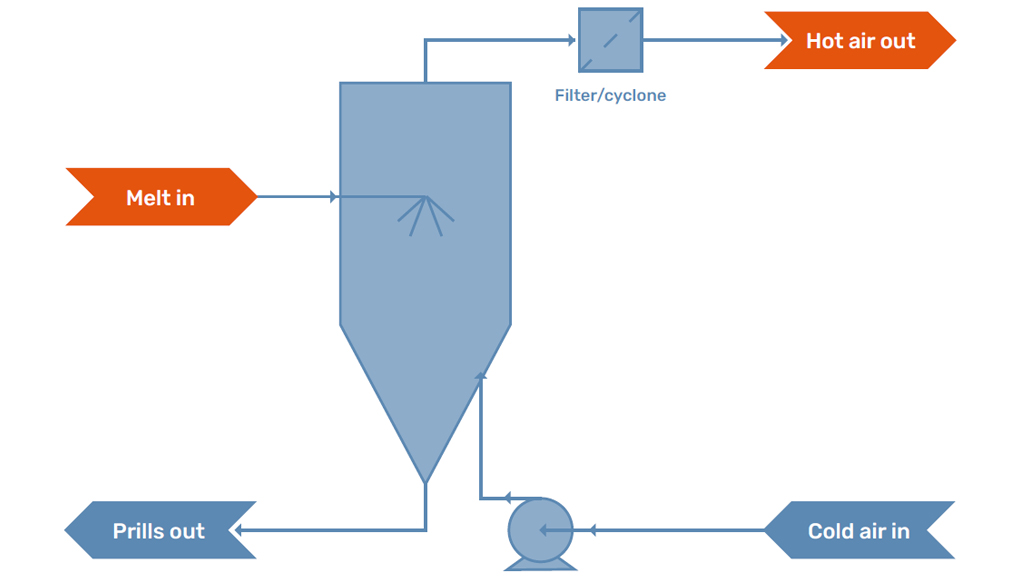
Advantages:
- Quick Dissolution: Prilled urea dissolves rapidly upon contact with moisture, making nutrients readily available for plant uptake.
- Cost-Effective: Prilled urea is generally more affordable due to simpler manufacturing processes and lower production costs.
- Easy Handling: Prills have a small, spherical shape, making them easy to handle and transport.
- Versatility: Prilled urea can be applied in various ways, including foliar applications and specific soil conditions that require fast nutrient release.
Disadvantages:
- Dustiness: Prilled urea tends to generate more dust, which can be a concern during handling and storage.
- Limited Release Control: Due to its smaller particle size and quick dissolution, prilled urea offers less control over nutrient release compared to granular urea.
- Uneven Spreadability: The spherical shape of prills may lead to uneven distribution when applied through fertilizer spreaders, resulting in uneven nutrient coverage.
What is Granular Urea?
Granular urea, or “urea granules,” is produced through a different process known as granulation. Granulation is a process of agglomerating fine powder or small particles into larger and irregular ones by using a rotating device such as a drum or a granulator. The urea melt coats the particles and solidifies, forming larger, denser granules.
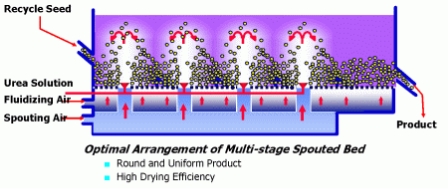
The powder or particles are mixed with a binder or a liquid solution that helps them stick together. The granules are then dried by hot air or steam to remove excess moisture.
The size and shape of the granules depend on several factors, such as:
- The device design: The shape, size, angle, speed, and lining of the device affect the movement and mixing of the material.
- The rotation speed: The speed of the device affects the centrifugal force and residence time of the material.
- The binder type and amount: The type and amount of binder affect the wetness, stickiness, hardness, and durability of the granules.
- The drying time: The time required to dry the granules affects their moisture content, strength, and stability.
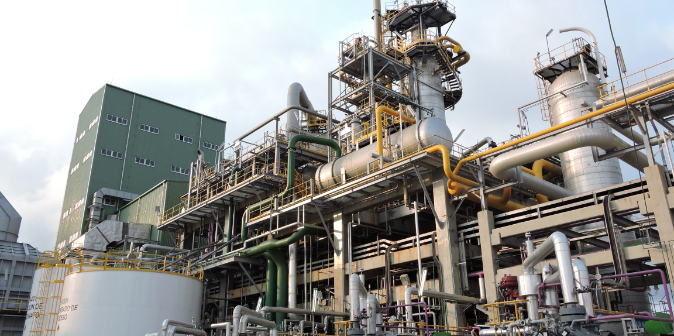
Granular urea has a broader size distribution and higher crushing strength than prilled urea, making it more resistant to physical damage during handling, storage, and application. It’s often used in situations where slow-release properties are beneficial, such as in soil with high rainfall or irrigation.
Advantages
- Controlled Nutrient Release: Granular urea provides controlled release of nutrients, ensuring a more sustained and prolonged nutrient supply to plants.
- Better Spreadability: Granules have a larger particle size and more irregular shape, allowing for better spreadability and more even distribution.
- Storage Stability: Granular urea exhibits better storage stability, with reduced caking and agglomeration during prolonged storage.
- Higher Crushing Strength: Granular urea has higher crushing strength due to the inclusion of binding agents, making it more resistant to breakage.
Disadvantages
- Higher Cost: Granular urea tends to be more expensive compared to prilled urea due to the additional processes involved in manufacturing and the use of binding agents.
- Slower Dissolution: Granular urea requires more time to dissolve and release nutrients, which can affect immediate plant availability.
- Bulkiness: Granular urea has larger particle sizes, which can be bulkier and more challenging to handle and transport compared to prills.
Differences Between Prilled and Granular Urea:
- Particle Size: Prilled urea has smaller particles (0.5mm to 3mm), while granular urea has larger particles (2mm to 4mm or more).
- Appearance: Prilled urea is spherical in shape, resembling small beads or pellets, while granular urea has an irregular shape with a rough texture.
- Strength: Granular urea has higher crushing strength compared to prilled urea due to the use of binding agents during the manufacturing process.
- Dustiness: Prilled urea produces more dust due to its smaller size and spherical shape, while granular urea is less dusty and easier to handle.
- Application: Prilled urea is used for rapid dissolution in foliar applications or specific soil conditions, while granular urea is a conventional solid nitrogen fertilizer providing controlled nutrient release.
- Storage Stability: Granular urea has better storage stability, with reduced caking and agglomeration, compared to prilled urea.
- Spreadability: Granular urea offers better spreadability characteristics for even distribution when applied through fertilizer spreaders.
- Solubility: Prilled urea dissolves quickly upon contact with moisture, while granular urea requires more time to dissolve and release nutrients.
- Absorption Rate: Prilled urea is absorbed more rapidly by plants due to its smaller size and higher solubility compared to granular urea.
- Price: Prilled urea is generally more cost-effective than granular urea due to simpler manufacturing processes and lower production costs.
The Science Behind Prilling and Granulation
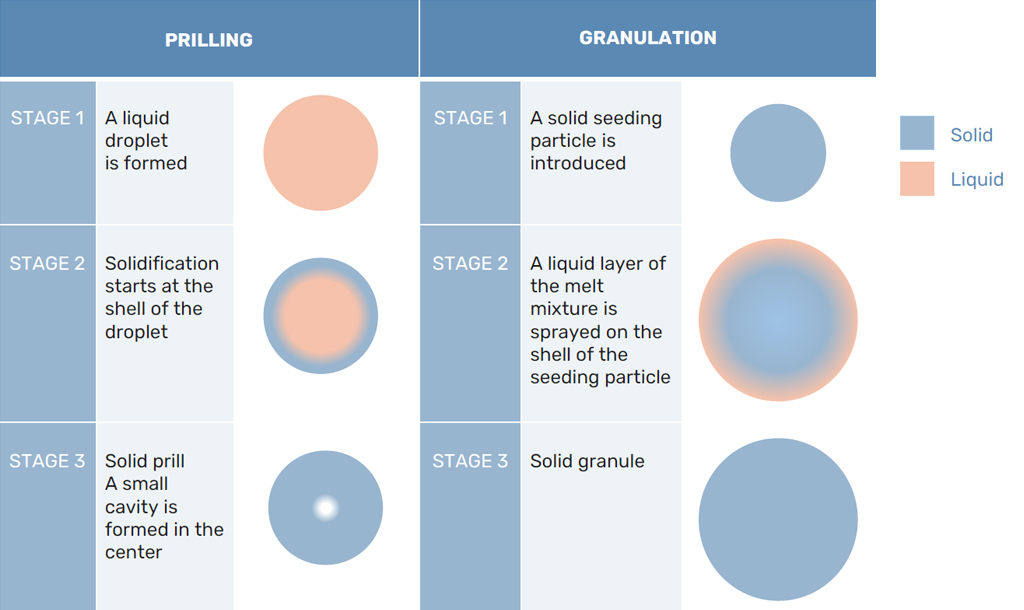
Prilling and granulation are two different urea finishing techniques that result in different physical and mechanical properties of the final product. The prilling process involves the formation of droplets from the urea melt, which solidify as they fall through the prilling tower. The granulation process, on the other hand, involves coating solid particles with the urea melt in a granulator, forming larger granules.
These processes affect the urea’s thermal characteristics, size distribution, and strength, influencing its effectiveness as a fertilizer.
Choosing Between Prilled and Granular Urea: Factors to Consider
When choosing between prilled and granular urea, consider the following factors:
- Type of Crop: Some crops may benefit more from the rapid dissolution of prilled urea, while others may prefer the slow-release properties of granular urea.
- Soil Conditions: Granular urea may be more suitable for soils with high rainfall or irrigation due to its slow-release properties.
- Climatic Factors: In areas with high humidity, granular urea may be preferred due to its higher resistance to moisture.
The table below summarizes the suitability of prilling and granulation for different types of fertilizers.
| Fertilizer | Prilling | Granulation |
|---|---|---|
| Urea | ✔️ | ❌ |
| Ammonium nitrate | ✔️ | ❌ |
| Calcium ammonium nitrate | ✔️ | ❌ |
| Phosphate | ❌ | ✔️ |
| Potash | ❌ | ✔️ |
| Compound | ❌ | ✔️ |
The table below compares the typical particle size and shape of prills and granules.
| Particle | Size (mm) | Shape |
|---|---|---|
| Prill | 1-4 | Spherical |
| Granule | 2-6 | Irregular |
The table below compares the main cost components of prilling and granulation.
| Cost component | Prilling | Granulation |
|---|---|---|
| Equipment | Low | High |
| Energy | Low | High |
| Water | Low | High |
| Waste | High | Low |
The table below compares the main environmental impacts of prilling and granulation.
| Environmental impact | Prilling | Granulation |
|---|---|---|
| Air pollution | High | Low |
| Noise pollution | High | Low |
| Water consumption | Low | High |
| Wastewater production | Low | High |
Case Study: Prilling vs Granulation in Real-World Scenarios

In real-world scenarios, the choice between prilled and granular urea can significantly impact agricultural outcomes. For example, in a study comparing the use of prilled and granular urea in rice farming, it was found that granular urea resulted in higher yields due to its slow-release properties, providing a steady supply of nitrogen to the crops.
Future Trends in Urea Production and Application
Looking ahead, emerging trends and technologies in urea production could further refine the properties of prilled and granular urea. For instance, advancements in urea synthesis could lead to the production of urea with even more tailored properties, enhancing its effectiveness as a nitrogen fertilizer.
Conclusion
In conclusion, both prilled and granular urea have their unique advantages and applications. The choice between the two depends on various factors, including the type of crop, soil conditions, and climatic factors. As we look to the future, advancements in urea production and application promise to further enhance the effectiveness of this crucial agricultural input.
FAQs
The main difference lies in their production process and physical properties. Prilled urea is produce through prilling and has a uniform size and lower strength. Granular urea is produce through granulation, has a varied size, and higher strength.
It depends on the application. Prilled urea is better for rapid dissolution, while granular urea is better for slow-release applications.
Yes, both types can be use together or separately, depending on the specific needs of your crops and soil conditions.
No, both prilled and granular urea contain the same amount of nitrogen, which is the essential nutrient for plant growth.

